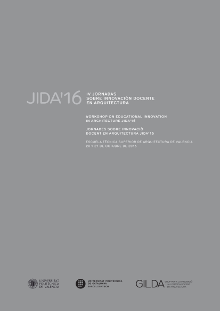Afición, necesidad, orden
DOI:
https://doi.org/10.5821/jida.2016.5128Resumen
¿De qué sirve enseñar? ¿Es posible aprender? ¿Estudiamos por gusto, o por necesidad? Cada vez gastamos más tiempo tratando de organizar la enseñanza, de introducir nuevas tecnologías o de justificar lo realizado, pero la estructura de los planes de estudios es inmutable. ¿Tiene sentido enseñar lo que no se quiere aprender? o dicho de otra manera ¿es posible aprender aquello de lo que no se tiene necesidad? No defendemos la frase, mezquina y limitadora que dice: "hay que enseñar cosas prácticas", sino una voluntad de exigir a las universidades que sean capaces de inculcar a sus alumnos la necesidad de estudiar, hacer o practicar aquello que les permita arquitectos felices. ¿Es necesario haber sufrido por culpa de las matemáticas, estructuras, proyectos o dibujo? No. Y será contraproducente, pues de nada sirve que, superado el trámite formal del aprobado, se ignore la importancia de lo que se acaba de dejar atrás.Ver información del DOI en DOIBoard Crossref (by UPC)






















